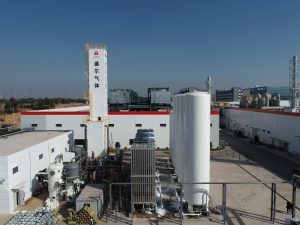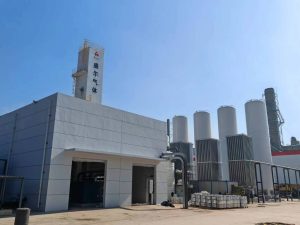Overview of Plate-Fin Heat Exchangers
Plate-fin heat exchangers (PFHEs) are a class of compact heat exchangers that provide extremely high heat transfer efficiency in a small footprint. They are constructed from multiple layers of thin, corrugated fins and smooth plates that are vacuum-brazed or diffusion-bonded together. Each layer creates a narrow channel; adjacent layers carry alternate hot and cold fluid streams. This multi-stream configuration and the high surface area-to-volume ratio allow PFHEs to achieve small temperature approaches (often 1–2 K or less) while remaining lightweight and compact. These features make PFHEs particularly valuable in applications requiring high compactness and precise thermal control, such as cryogenic processes, aerospace heat recovery, and hydrogen liquefaction.
Plate-fin units are often referred to as brazed aluminum heat exchangers (BAHX), reflecting their aluminum alloy construction and brazing manufacturing method. They were first adopted in large-scale cryogenic air separation (and LNG) plants around World War II, and later spread to other cryogenic industries. Unlike traditional shell-and-tube exchangers, PFHEs have no moving parts or gaskets, which improves reliability and reduces maintenance in low-temperature service. The design flexibility also allows heat exchange between multiple streams in a single core, enabling integration of refrigeration circuits or precooling loops in a cryogenic system. In a cryogenic air separation unit (ASU), the main plate-fin heat exchanger (often called the cold box main heat exchanger) is the heart of the refrigeration cycle, greatly influencing system efficiency and capacity. Its compact design reduces the overall size of the cold box and lowers heat losses to ambient.
插板鳍式热交换器概述
插板鳍式热交换器是一种紧凑型的热交换器,拥有极高的传热效率和表面积。插板鳍式热交换器由多层薄钢板和波纹鳍片交替堆叠而成,之后通过真空钎焊(或扩散焊)整合成一体。每一层结构形成狭窄通道,热流体和冷流体分别在交替的通道中流动。高表面积和多通道配置使插板鳍式热交换器在体积小的情况下都能达到极小的温差,保持高传热效率,同时体积和重量都很小,适合应用在需要高效冷热交换的行业。
这种热交换器有时又称为铝焊板式换热器(Brazed Aluminum Heat Exchanger),反映了其铝合金材料和钎焊制作工艺。插板鳍式热交换器早在中日战争时期已应用于深冷空分和液化天然气工厂,能有效处理液化气体并实现接近平衡温度的冷却。不同于传统壳管式热交换器,插板鳍式没有运动部件和密封垫片,在低温环境下更加可靠耐用。由于设计灵活,可以同时处理多种流体,因此可以在冷箱中将多个冷流道合并于一部装置,提升热能回收效率。在深冷空分装置里,主热交换器(又称冷箱主换热器)是制冷循环的核心,其紧凑设计可以缩小整个冷箱规模并降低对外界的热损失。
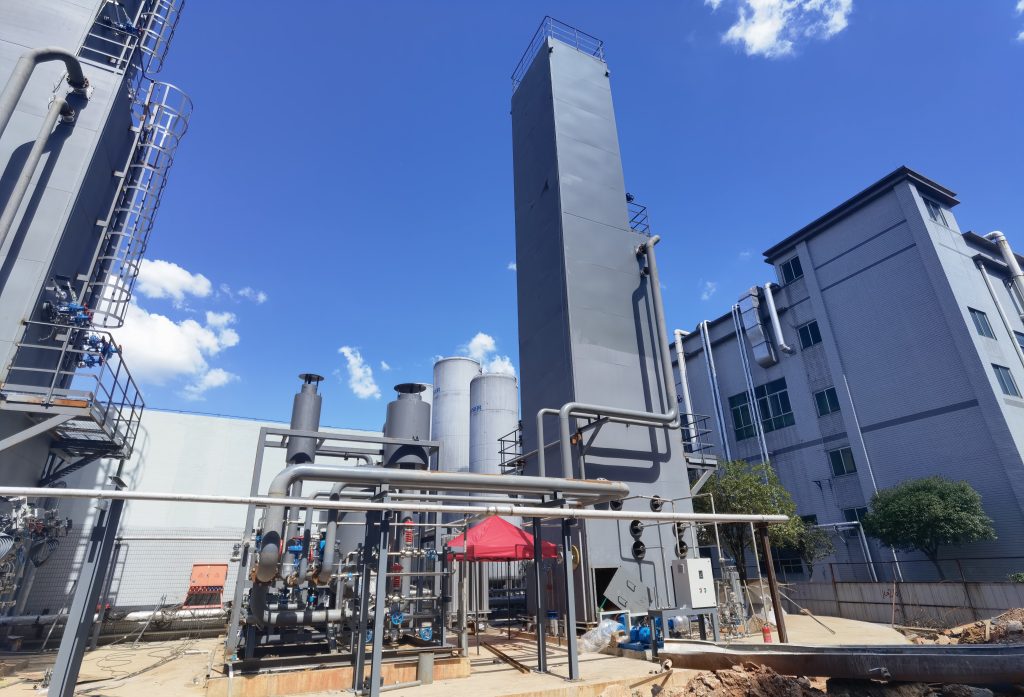
Working Principles of Plate-Fin Heat Exchangers
The working principle of a plate-fin heat exchanger relies on highly efficient conduction and convection across closely spaced surfaces. Alternating streams of hot and cold fluid are directed through the stacked fin channels. Heat transfers from the hotter stream to the colder one by conduction through the fins and separator plates and by convection within each fluid channel. Typically, the flow arrangement in cryogenic PFHEs is countercurrent (or near-countercurrent), with the two streams moving in opposite directions to maximize heat transfer. Corrugated fins induce turbulence and promote cross-mixing, which further enhances the convective heat transfer coefficient. The bonded fins and plates create a rigid, high-strength core that can operate at high pressures without leakage.
Plate-fin heat exchangers can handle single-phase gases as well as phase-changing flows. For example, one stream may vaporize liquid oxygen while the other condenses liquid nitrogen, recovering latent heat as well as sensible heat. Internal distributors or multi-pass configurations are used to ensure uniform flow distribution and control pressure drop, especially on the cold side. The combination of very high surface area and intense mixing leads to a large NTU (number of transfer units) and thermal effectiveness near unity, meaning the cold outlet can approach the hot inlet temperature very closely.
工作原理
插板鳍式热交换器的工作原理是将两种或多种工艺流体分别导入相邻的鳍片通道中,从而实现热量转移。热流体会通过导热鳍片和隔板将热量传递给冷流体。通常在深冷空分装置中,会采用逆流结构——即两种流体沿相反方向流动,从而最大化传热效率。波纹鳍片的设计使通道内流体产生紊流或交叉流动,增强对流传热。同时,薄板和鳍片之间的导热距离仅为毫米级,热阻很小,可以快速导热。整个换热器通过真空钎焊或扩散焊连成一体,形成坚固的核心结构,可以在高压环境下运行而不渗漏。
插板鳍式热交换器可以处理单相流体或相变流体。例如可以在一侧用来蒸发液态氧吸热,另一侧用来冷凝液态氮放热,将相变热纳入换热过程。设计时通常会采用分流装置或者多通道布局,以确保各通道有均匀流量,并控制压降。由于拥有非常大的换热表面积和强力混合特性,PFHE的传热效率(NTU)非常高,换句话说,冷侧出口温度可以非常接近热侧入口温度,实现高效的热平衡。
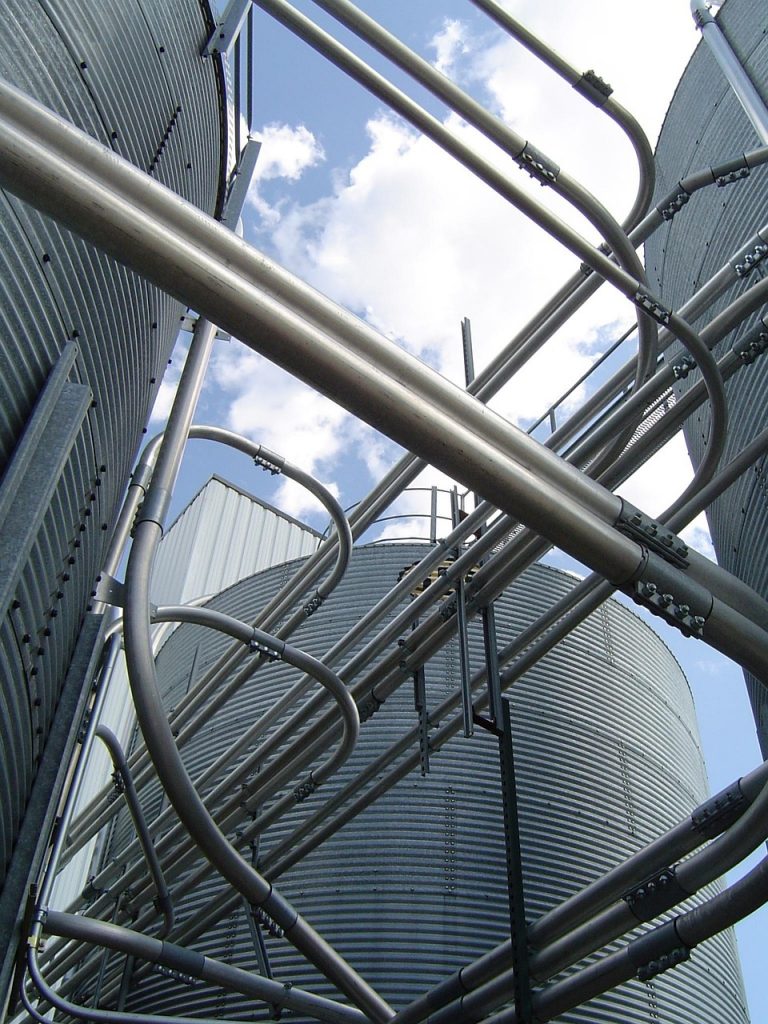
Structural Features and Materials
Structurally, a plate-fin heat exchanger consists of stacked modules of plates and fins enclosed by supporting side bars and covers. Flat separator plates alternate with corrugated fin packs to form the core. End plates act as headers and have ports through which each fluid stream is introduced and collected. Typical fin patterns include plain straight fins, herringbone (chevron) fins angled to create counterflow mixing, perforated and offset fins with cut-outs, or louvered fins, each tailored to a specific flow and heat transfer requirement. These fins both enlarge the heat transfer area and support the plate spacing under high pressure.
The entire core is bonded in a brazing furnace or diffusion bonding process, producing a monolithic, gasket-free unit. Common materials are aluminum alloys (often brazed aluminum for cryogenic service) and stainless steel; nickel alloys or copper may be used in specialized cases. Aluminum alloy PFHEs are favored for their excellent low-temperature strength, high thermal conductivity, and low weight, while stainless steel PFHEs are used for very high pressures, cryogenic hydrogen service or corrosive environments. Channel heights are typically only a few millimeters, which maximizes heat transfer area but requires precise manufacturing. Designers sometimes incorporate features like corrugated side-bars or expansion joints to relieve thermal stresses from the large temperature changes in cryogenic cycles.
结构特点与材料
插板鳍式热交换器的核心由叠合的隔板和平行排列的波纹鳍片组成,整个核心被侧板和端板封装。隔板和鳍片交替堆叠,每一对隔板中间有一组波纹鳍片形成流道。端板通常有多个接口,用于连接各个流体的入口和出口。常见的鳍片形状包括直线型、斜鳍型(人字形)和穿孔型等,这些设计可以引导流体作交叉流动或分散流场,以增强传热效果。鳍片不仅大大增加传热面积,还帮助保持板间距离,使换热器在高压运行时也能保持结构稳定。
插板鳍式热交换器的板片和鳍片是通过真空钎焊或扩散焊一次性熔合成个整体,完全没有使用了密封垫。常用材料包括铝合金(尤其是用于深冷空分装置的铝焊板)和不锈钢,特殊情况下可能用到镍基合金或铜合金。铝合金材质的PFHE在低温下强度高、导热好、重量轻,因此非常适合用于低温气体液化;而不锈钢PFHE则适合更高压力、氢气工艺或腐蚀性介质。通道高度通常只有几毫米,增大了单位体积传热面积,但对加工精度要求较高。设计时有时会加入波纹侧板或膨胀节等结构,吸收因温度梯度造成的热应力。
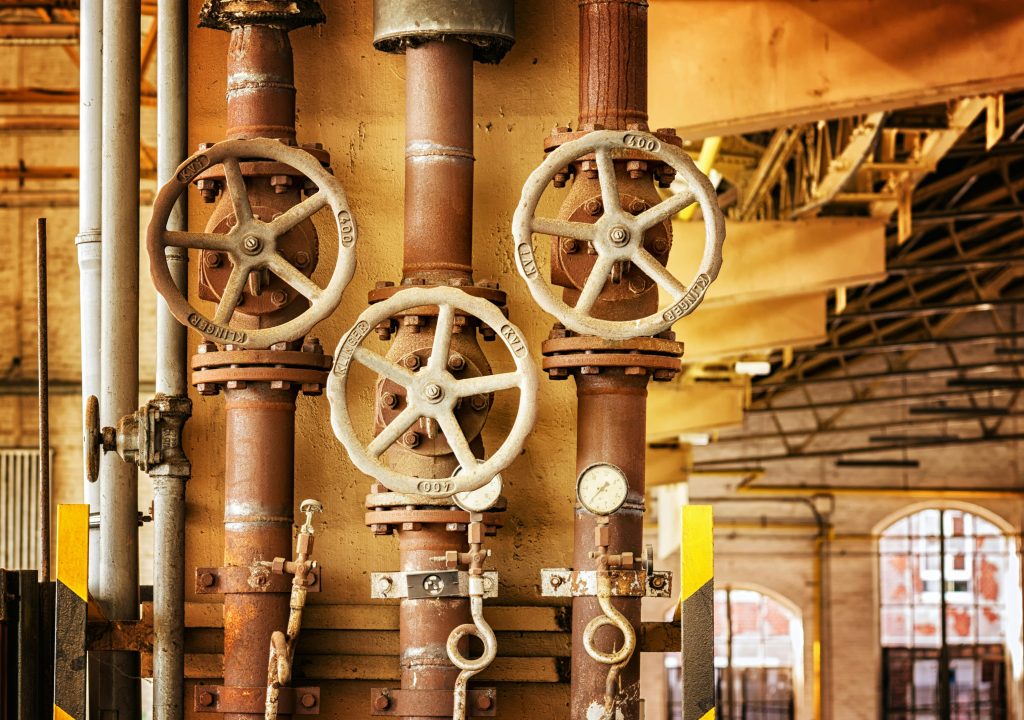
Heat Transfer Mechanisms
Heat transfer in plate-fin heat exchangers occurs by convection on the fluid side and conduction through the metal walls. Because the channels are very shallow, fluid velocities are high and flows are usually turbulent or in a transitional regime, producing large convective heat transfer coefficients (often several thousand W/m²K). The fins and plates are very thin and short, so solid conduction resistance is minimal. This combination of high convection and low conduction resistance yields an effective thermal path for heat exchange. Moreover, the effective transfer area per unit volume is enormous—on the order of 1000–3000 m² of surface area per m³ of core—far higher than conventional exchangers.
In cryogenic applications, latent heat transfer further enhances performance: for example, condensing nitrogen or evaporating oxygen within the PFHE transfers large amounts of heat. Designers quantify heat transfer performance using the number of transfer units (NTU) or effectiveness, and PFHE cores often achieve NTU values that make their effectiveness approach unity. This means the cold outlet can approach the inlet temperature of the hot stream very closely (small approach temperature). Additionally, the multi-stream design allows combination of heat exchange duties (such as precooling, liquefaction, vaporization) in one integrated device, improving overall plant exergy efficiency.
传热机制
插板鳍式热交换器内的传热机制主要包括两边流体之间的对流换热和金属材料的导热。由于流道高度仅有几毫米,流体流经时速度快且往往会产生紊流或强对流,使得对流换热系数非常高(通常可达到数千W/m2K)。同时,鳍片和隔板都很薄,热传导距离极短,固体导热阻力极低。这种对流换热强而导热阻力弱的组合提供了良好的热通路,使热量快速在流体间传递。此外,由于核心体积比表面积极大(每立方米体积内表面积可能达到数千平方米),比传统壳管式热交换器大得多,进一步提升整体传热能力。
在深冷应用中,相变换热也显著增强传热:例如在插板鳍式换热器内,液氮冷凝或氧气蒸发可以吸放大量潜热。工程师通常用传热单元数(NTU)和热交换效率(effectiveness)来评估性能,PFHE通常可以实现非常高的NTU,使效率接近理论最大值。换言之,冷侧出口温度可以非常接近热侧入口温度(极细的温差)。多流体布局也容许在同一装置中集成多段换热过程(如预冷、液化、蒸发),从而提高整体工艺的热力学效率。
Advantages in Cryogenic Air Separation Applications
Plate-fin heat exchangers offer several advantages in cryogenic air separation plants. Their exceptionally high heat transfer efficiency allows approach temperature differences often in the range of 1–2 K or even lower between cold and warm streams. This translates into significant savings in compression power and refrigeration duty. Because of their compact size and low weight, PFHEs reduce the required size of the cold box and minimize heat inleak from the surroundings. Modular brazed construction makes these exchangers reliable and easy to assemble within the insulation shell.
Multi-stream capability is another major benefit. PFHE cores can contain multiple inlet and outlet pairs, enabling simultaneous precooling of incoming air and warming of exhausts in one device. For example, liquid oxygen reflux, nitrogen condenser reboilers, and air precooling streams can all share the same core. Brazed aluminum PFHEs maintain high strength at cryogenic temperatures and have low thermal mass, which helps during plant start-up and transients. Overall, their high surface area and low hold-up volume enable quick thermal response and fine temperature control.
One drawback is that the small flow channels require very clean process gas; particulate or liquid contamination can foul or block the passages, so upstream filtration is essential. Also, any brazing or weld leak at high pressure can cause inefficiency or safety hazards, so stringent quality control is required during manufacturing.
在深冷空分应用中的优势
在深冷空分系统中,插板鳍式热交换器的高换热效率带来多个优势。首先,由于可以实现非常细微的温差,整个工艺所需的额外压缩能量会大幅降低,从而节省能耗。换热器结构紧凑、重量轻,使冷箱体积和所需隔热面积减至最低,并且可模组化设计,便于运输和安装。多流道设计更可以同时预冷进气与回收排气热量,例如高压空气与液氮、液氧回流之间的热交换,都能在一部换热器内完成,提高整体热回收率。
此外,采用铝合金钎焊的PFHE在低温下强度高、热惯性低,有利于设备启动速度快和精准调节温度。由于其大表面积和细微管道体积,PFHE对温度变化反应灵敏,换热速度快、热平衡时间短。不过,细小通道也带来挑战:如果工艺气体未经充分过滤而带有颗粒或液滴,可能会造成堵塞。钎焊或焊接接头如出现漏缝,高压运行时可能造成效率损失甚至安全问题,因此制造时需要严格品质控制和定期检测。
Design and Performance Optimization
Designing an optimal plate-fin heat exchanger requires balancing heat transfer performance against pressure drop, size, and manufacturability. Key design parameters include fin geometry (height, thickness, pattern, pitch) and channel dimensions. Denser fins or more complex patterns (e.g. serrated or offset fins, perforated designs) can greatly enhance heat transfer by increasing area and inducing mixing, but they also raise flow resistance. Engineers must optimize the number of passes or separate blocks in the core to distribute flow and manage pressure drop, especially in the cold, high-density streams of a cryogenic process. Overall, finding the right configuration often requires iterative calculation of thermal effectiveness and pressure drop to meet the process requirements.
Modern PFHE design frequently uses computational fluid dynamics (CFD) and multi-objective optimization to navigate trade-offs between efficiency and cost. For instance, researchers optimize fin patterns and core layouts to maximize the second-law efficiency of the entire ASU. Special features such as expansion joints, corrugated side-bars, or specially slotted fins can be added to absorb thermal stresses from large temperature gradients. Clean operation is also critical: designers include filtration and freeze control measures to prevent fouling in these small passages. By leveraging advanced simulation tools and precise fabrication, engineers continuously improve plate-fin heat exchangers to achieve higher thermal performance and reliability.
设计与性能优化策略
插板鳍式热交换器的设计与优化需要在传热性能、压降和制造成本之间取得平衡。工程师会调整鳍片的几何参数(高度、厚度、形状、间距)和通道布局,来控制流场和增加换热面积。密集的鳍片或特殊结构(如穿孔鳍、错流鳍)虽然可以提高对流换热,但同时会导致更大的压力损失,因此通常要反覆计算和模拟,评估不同组合的换热效果和流阻情况,以选出最佳方案。
现代设计通常会运用计算流体力学(CFD)和多目标优化技术,来研究效率和成本之间的折衷。设计者会优化鳍片图案和核心布局,将整个空分系统的总热力学效率最大化。为了降低热应力,一些设计会加入膨胀节、波纹侧板或断续鳍片等结构。长期运行时也需确保系统洁净,以免堵塞细小通道,因此换热器通常搭配精密过滤装置。透过先进模拟工具和精密制造,插板鳍式换热器的性能和可靠性得以持续提升。
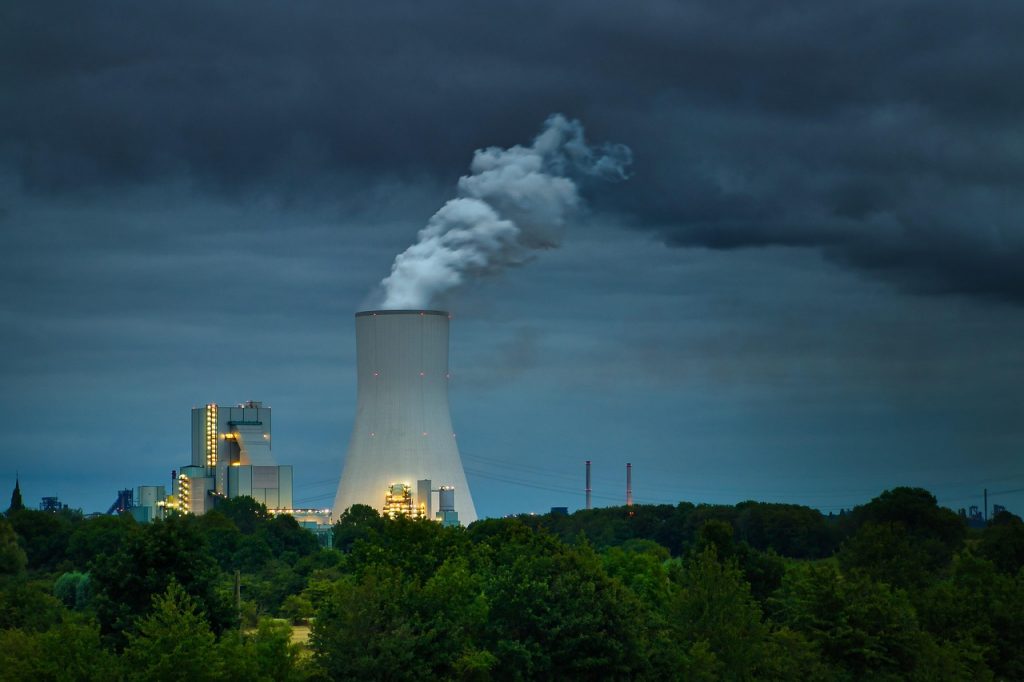
结论
Plate-fin heat exchangers remain the technology of choice for efficient cryogenic processes due to their unmatched combination of compactness, high thermal performance, and flexibility. Ongoing advancements in design and manufacturing—such as improved brazing techniques, advanced alloys, and digital simulation tools—are further enhancing PFHE capabilities. In cryogenic air separation, optimized plate-fin exchangers enable higher product yields and lower energy consumption than many alternative exchanger types.
Overall, plate-fin heat exchangers are the cornerstone of modern ASU heat exchanger design. Engineers continually refine their configurations and control strategies to push thermal efficiency and reliability even higher, driving toward more cost-effective and sustainable cryogenic air separation systems.
结论
总之,插板鳍式热交换器以其卓越的换热效率和紧凑型设计成为现代深冷空分装置换热系统的核心。随着计算模拟技术、制造工艺(例如真空钎焊或增材制造)和材料性能的不断改进,PFHE的性能和可靠性将持续提升。通过不断优化其结构和工艺配置,插板鳍式热交换器将继续推动深冷空分系统实现更高产能和更低能耗,从而促进更加高效、可持续的气体分离工艺。

